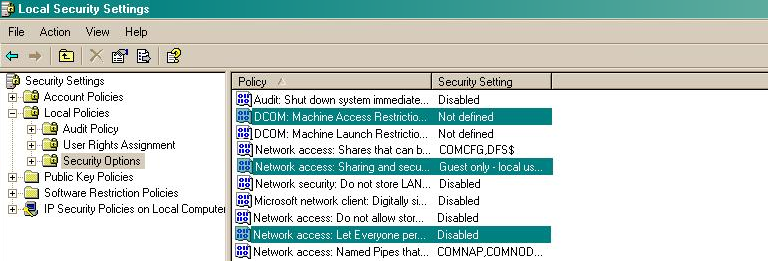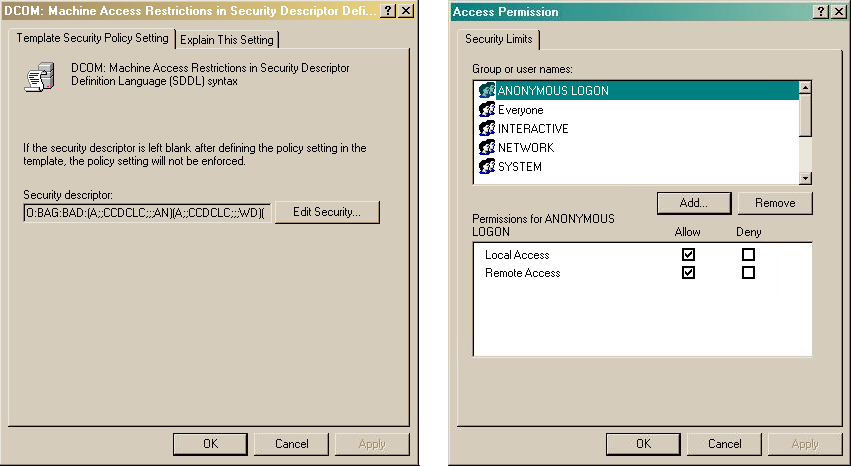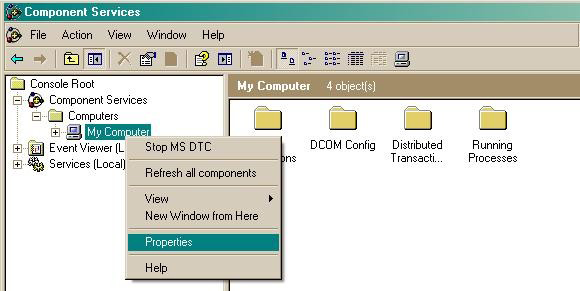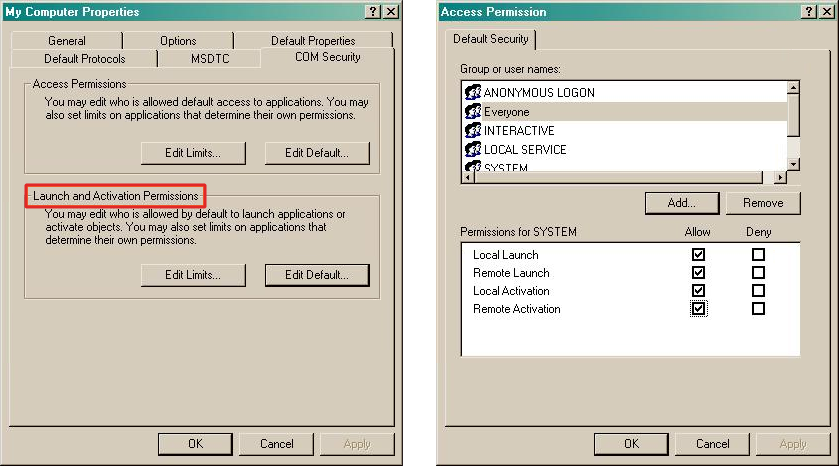To connect a BCM v3.7 or below with NetPBX, please follow the instructions below:
- Make sure the CDRServer.EXE and Interop.CDRSERVERLib.dll files are placed in the same folder as NetPBX.EXE, usually located in {pf}\Tri-Line\NetPBX.

- Register CDRServer.EXE by running the command line with administrator privileges and typing the following command under the directory path of the NetPBX folder: CDRServer.EXE/regserver.
- Open the computer's local security policies: Start -> Control Panel -> Administrative Tools -> Local Security Policy.

- Within the Security Settings\Local Policies\Security Options tree, please change the following items as highlighted in the screenshot below:

- Network Access: Let Everyone permissions apply to anonymous users. Set this to Enabled.
- Network Access: Sharing security model for local accounts. Set this to Classic.
- DCOM: Machine Access Restrictions: Click on and add the following user accounts: Anonymous, Everyone, Interactive, Network, System. Set each one to have full access rights.

- Next step is to modify the way DCOM behaves on the computer by executing the DCOM configuration program: Start -> Run -> DCOMCNFG [enter]. Browse the tree to the following location: Console Root -> Component Services -> Computers -> My Computer. Righ-click on My Computer forand amend or update the following options:

- On the tab:
Enabled Distributed COM on this computer: select the tickbox of this option.
Default Authentication Level: set this to Connect.
Default Impersonation Level: set this to Identify.
- On the tab:
Go to the Access Permissions section and select.
Add the following accounts and set both local and remote access permissions: Anonymous, Everyone, Interactive, Network, Local Service and System.
- On the tab:
To connect a BCM v3.7 or below with NetPBX, please follow the instructions below:
- Make sure the CDRServer.EXE and Interop.CDRSERVERLib.dll files are placed in the same folder as NetPBX.EXE, usually located in {pf}\Tri-Line\NetPBX.
- Register CDRServer.EXE by running the command line with administrator privileges and typing the following command under the directory path of the NetPBX folder: CDRServer.EXE/regserver.
- Open the computer's local security policies: Start ? Control Panel ? Administrative Tools ? Local Security Policy.
- Within the Security Settings\Local Policies\Security Options tree, please change the following items as highlighted in the screenshot below:
- Network Access: Let Everyone permissions apply to anonymous users. Set this to Enabled.
- Network Access: Sharing security model for local accounts. Set this to Classic.
- DCOM: Machine Access Restrictions: Click on and add the following user accounts: Anonymous, Everyone, Interactive, Network, System. Set each one to have full access rights.
- Next step is to modify the way DCOM behaves on the computer by executing the DCOM configuration program: Start ? Run ? DCOMCNFG [enter]. Browse the tree to the following location: Console Root ? Component Services ? Computers ? My Computer. Righ-click on My Computer for and amend or update the following options:
- On the tab:
Enabled Distributed COM on this computer: select the tickbox of this option.
Default Authentication Level: set this to Connect.
Default Impersonation Level: set this to Identify. - On the tab:
Go to the Access Permissions section and select .
Add the following accounts and set both local and remote access permissions: Anonymous, Everyone, Interactive, Network, Local Service and System.

Go to the Launch and Activation Permissions section and select .
Add or update the following accounts to give them all local and remote access permissions: Anonymous, Everyone, Interactive, Network, Local Service and System.







Labels: